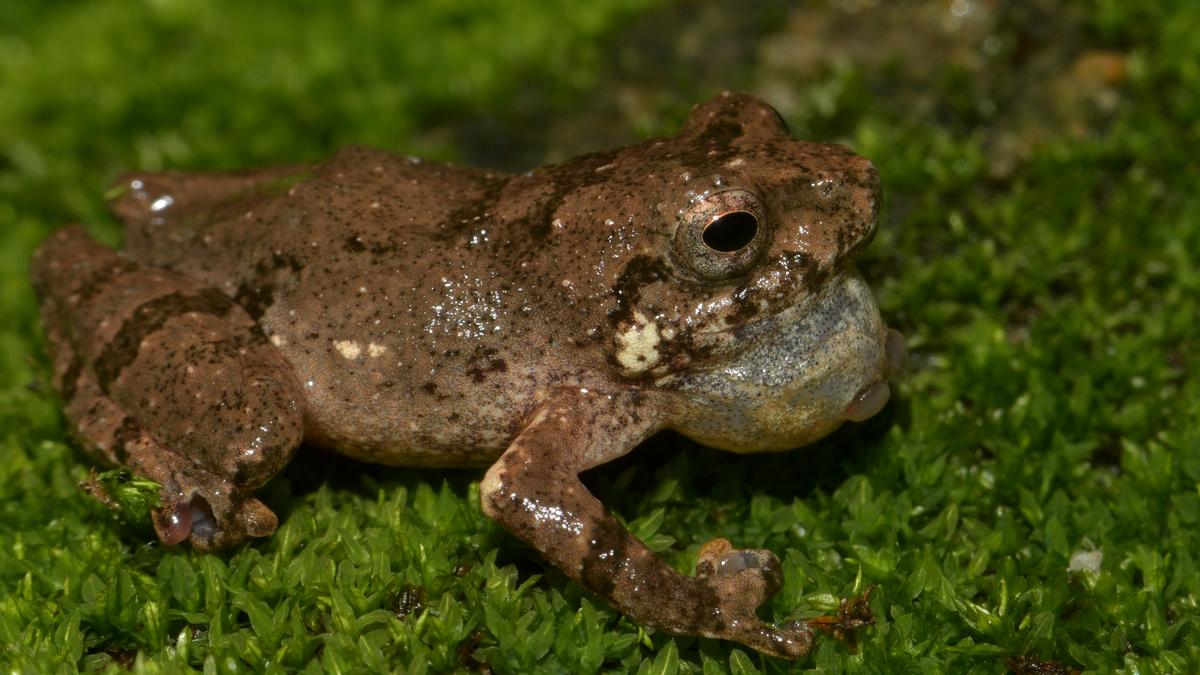ARTICLE AD BOX
Last Updated:July 26, 2025, 17:41 IST
A team of Indian scientists has made a pivotal observation linking Puga Valley's unique geothermal activity to the chemistry of early life

These discoveries could significantly alter our understanding of life's origins on Earth and help in detecting biosignatures on other planets like Mars. (Representational image/AP)
In the stark, icy high-altitude environment of Ladakh, a natural hot spring located in the Puga Valley is facilitating potentially groundbreaking scientific discoveries. These discoveries could significantly alter our understanding of life’s origins on Earth and help in detecting biosignatures on other planets like Mars.
A team of Indian scientists from the Birbal Sahni Institute of Palaeosciences (BSIP), an autonomous institution under the Department of Science and Technology (DST), has made a pivotal observation linking the valley’s unique geothermal activity to the chemistry of early life.
Traditional theories regarding the origin of life on Earth often focus on silica-based environments. However, the Indian team, led by Dr Amritpal Singh Chaddha, Dr Sunil Kumar Shukla, and Dr Anupam Sharma, has shifted focus to the role of carbonates, especially calcium. They noted rapid carbonate precipitation in the Puga Valley’s extreme hot spring environment. Their interdisciplinary study, published in the prestigious journal ACS Earth and Space Chemistry, presents empirical evidence that natural travertine (calcium carbonate deposits) from the Puga Hot Spring can trap and preserve prebiotic organic molecules.
The scientists analysed the high-altitude hot spring travertine using advanced techniques such as microscopy, GC-MS-MS, Raman, XRD, IR, and stable isotope geochemistry. They discovered preserved amino acid derivatives, formamide, sulphur compounds, and fatty acids encapsulated within calcite. These findings are crucial because they suggest that calcium carbonate acted as a “potential natural template for origin-of-life chemistry under extreme Earth-like conditions", effectively concentrating and stabilising organic precursors essential for life.
The extreme environment of Puga Valley, with its unique geothermal activity and high UV radiation, is hypothesised to have acted as a real-world “prebiotic reactor and preservation site". This provides tangible, real-world evidence for phenomena previously explored only in laboratory settings.
The insights gained from Puga are not limited to Earth’s early history; they have significant implications for astrobiology. Conditions in Puga are thought to be similar to those on early Mars, where comparable hot springs and hydrothermal systems might have supported nascent life.
This research, conducted under BSIP’s newly formed Earth and Planetary Exploration Group (EPEG), will significantly aid future planetary exploration missions, including those by ISRO, in identifying true biosignatures. By enhancing the understanding of natural biomolecule preservation mechanisms, it also influences the development of new materials and life-detection technologies crucial for astrobiology and synthetic biology, potentially rewriting the playbook for the search for extraterrestrial life.

Pathikrit Sen Gupta is a Senior Associate Editor with News18.com and likes to cut a long story short. He writes sporadically on Politics, Sports, Global Affairs, Space, Entertainment, And Food. He trawls X via ...Read More
Pathikrit Sen Gupta is a Senior Associate Editor with News18.com and likes to cut a long story short. He writes sporadically on Politics, Sports, Global Affairs, Space, Entertainment, And Food. He trawls X via ...
Read More
- Location :
- First Published:
News india Research On Origins Of Life On Earth, Mars May Pick Up Steam From Ladakh's Hot Springs
Disclaimer: Comments reflect users’ views, not News18’s. Please keep discussions respectful and constructive. Abusive, defamatory, or illegal comments will be removed. News18 may disable any comment at its discretion. By posting, you agree to our Terms of Use and Privacy Policy.



.png)
.png)
.png)
















 8 hours ago
5
8 hours ago
5








 English (US) ·
English (US) ·